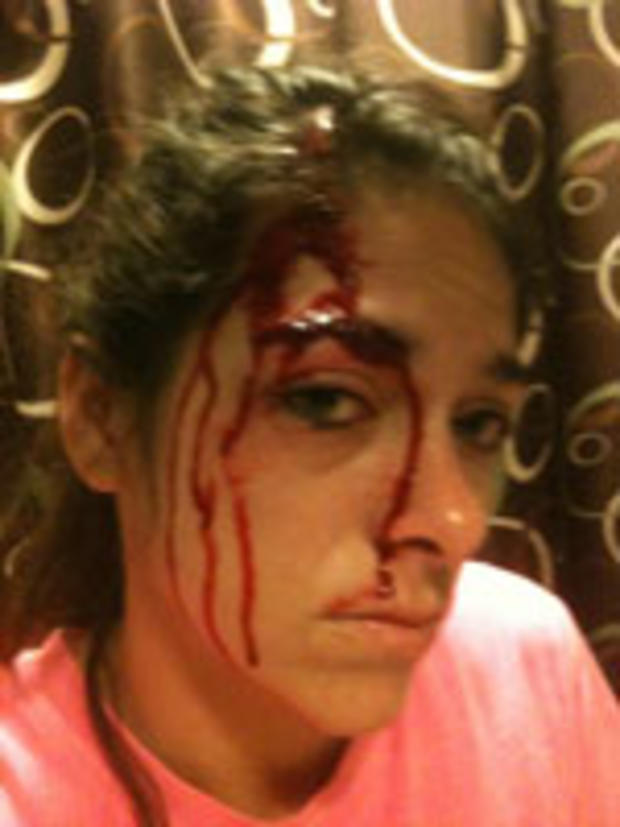Tracey Grissom: Victim or killer?
DELTA, Ala. -- At "48 Hours," we have to go wherever a story takes us, but the case of Tracey Grissom took us places we never expected. And our experience with this case is a reminder to never accept any evidence or any statement of a witness at face value. Verify, verify and verify again.
Some background: The defendant in this case is Tracey Grissom, a beautiful, 32-year-old mother of two who faced trial in August for the murder of her ex-husband. She had shot him on May 15, 2012, she told us, in self-defense after she had driven to his place of work and he had moved as if to strike her. She used deadly force to stop him because, according to Tracey, he had hurt her before. She describes herself as a domestic abuse victim who took matters into her own hands because as she told the 911 operator, "I couldn't take it no more."
That was all I knew about the story when I came to Delta, Ala. to interview Tracey with her defense attorney Warren Freeman. Tracey is an assertive, likable and very credible speaker, so her story was riveting, although early into my reporting, I began to have some nagging doubts.
Tracey told me that her ex-husband, Hunter Grissom, had assaulted and raped her on November 22, 2010, eighteen months before she killed him. She said that he had left her with bruises on her hips and legs and that the rape had caused internal tears.
She also showed us a picture of her face with blood pouring from a head wound. Hunter had thrown her against a bathtub and left her unconscious for hours, she said. Yet, the medical records from her hospital visit after the alleged rape describe only a "purely superficial" head wound and specifically state that Tracey received no internal injuries. I also noted some inconsistencies between the stories she told me and those she had told her lawyer.
Something else troubled me. Tracey had told me that she shot her husband because, when she faced him on a lakeside pier where he was working, she was traumatized. She shot him out of fear, she said. So naturally, I was reluctant to ask her to return to the scene of the shooting since I feared that it would be simply too emotional for her.
Yet, Tracey willingly drove me to the crime scene and appeared to have no difficulty in recounting the events. She even calmly reenacted the moments of the actual shooting that took the life of the man she had once loved.
There is an odd thing that happens in cases of alleged abuse. Few people want to question the victim's story. After all, domestic abuse often occurs behind closed doors, without witnesses. It is common and even normal for a victim to have no evidence.
In Tracey's case, however, she seemed to have evidence: pictures of deep, dark bruises and injuries she says Hunter Grissom inflicted. The pictures are very powerful, so powerful and convincing, that I noticed that most people just accepted Tracey's word that she had been raped.
When I interviewed Tracey's lawyer, Warren, and her rape counselor, Marian Waters, the word "alleged" was never used. Both accepted Tracey's version of events even though the rape case never went to trial and Hunter Grissom didn't live long enough to defend himself. Yet, the question has to be asked: would a woman, could a woman exaggerate injuries, maybe even cause some herself to frame a person for assault or rape?
It's when I talked to Hunter Grissom's family and lawyers that I began to get answers and they are truly disturbing. There are cell phone records that call into question Tracey's story about being knocked unconscious on the night of the alleged rape. And the cell phone itself which Tracey used to document her injuries sometimes contradicts her.
One example: remember the pictures of the bleeding head wound? She said she took those pictures before she went to the emergency room. There is nothing suspect about them until you look at the order that she took the photos. One taken shortly before 4 am shows a cut with just a little bit of blood. But a second picture she takes fourteen minutes later, looking directly and forlornly into the camera, shows blood pouring out of the wound and down her face.
Hunter Grissom had left the house hours before, so what happened to cause the "purely superficial" wound to bleed so profusely?
What seemed at first to be a simple, cut and dried case is suddenly a mystery. Why did Tracey Grissom kill her ex-husband? Did he really abuse and assault her or did she try to frame him? A picture may be worth a thousand words, but as it turns out, it may tell more than just one story.
Erin Moriarty is a "48 Hours" correspondent. See her interview with Tracey Grissom during "The Girl Next Door," Saturday at 10 p.m. ET/PT on CBS.


